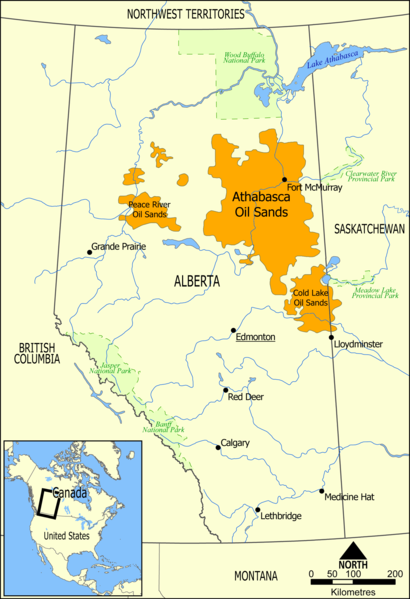The fate of our planet’s climate and its people depends largely on the total amount of carbon we emit into the atmosphere. It doesn’t matter how fast we emit it or where on the planet it spews from, like flood water into a valley, as it fills up we have to fend off the subsequent catastrophes.
In this post, I will briefly summarize the sizes of Earth’s fossil fuel carbon deposits and how much each will contribute to the deterioration of our planet’s climate system.
First, we ask, “how much warming is ‘safe’”? There’s no clear answer, of course, but a generally accepted benchmark is to limit global warming to C =
F, which requires emitting no more than
kg of carbon (or approximately 1,400 billion tonnes of carbon dioxide) for the next thousands years or so. Here’s a table of major carbon sources and the percentage of the way they get to this total:
|
Fossil Fuel Type |
Carbon Content (kg) |
% towards |
| Proven oil reserves |
28 |
|
| Proven gas reserves |
20 |
|
| Economically recoverable coal |
127 |
|
| Tar Sands economically recoverable |
4.6 |
|
| Tar Sands total |
46 |
It’s obvious that coal, which can get us above C all by itself, is the elephant in the room. Its massive time-bomb potential begs for the rapid deployment of carbon capture and sequestration technology (CCS), a plea which is unlikely to be answered given the preliminary and unsettled nature of the technology.
Proven oil and gas reserves are also large contributors, with gas being preferable to oil, though not by much. Note that all of these percentages could increase if A) new reserves are found or B) new technology or C) increases in fuel prices (through increased demand perhaps) makes extraction of these fuels less expensive.
Right now, the Alberta tar sands and the associated Keystone XL pipeline remains a hot-button political issue in Washington with environmentalists and residents of the Midwest, particularly Nebraska, staunchly against the pipeline.
Advocates of the pipeline who acknowledge its climate impacts argue that they are negligible in comparison to other sources of carbon and therefore deserve to be ignored. They further argue the pipeline will only ship 500,000-800,000 barrels a day, which is approximately 20 times less than the amount of crude oil the US imports every day.
However, two key points need to be remembered. First, the rate at which carbon is emitted is irrelevant. The total amount is what matters. So even if it were to take hundreds of years to drain the tar sands, the effect would be the same. Second, once the pipeline starts flowing, new technologies and fluctuations in fuel prices could quickly make larger amounts of the tar sands viable. If all were developed, which presently remains unrealistic, then this would be enough to get to C even if coal was removed from the equation.
From this perspective, we have an opportunity to cut off 5% of the remaining pie to C just by saying no to this pipeline, an option we lack with oil, coal, and gas. Getting 5% back for free would be a huge step in the right direction.





1 Comment